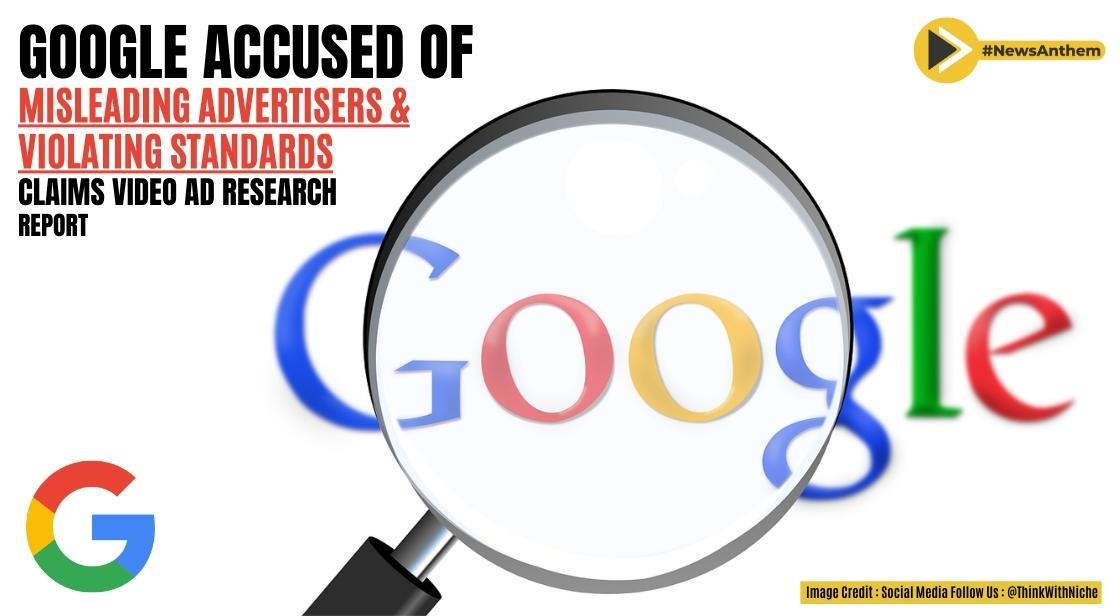Google Accused of Misleading Advertisers and Violating Standards, Claims Video Ad Research Report

News Synopsis
Google's Failure to Meet Promised Standards
In a new video ad research report released by Adalytics, allegations have surfaced claiming that Google has misled advertisers by not adhering to promised standards when placing video ads on third-party websites.
These findings come in the wake of a separate report by the Center for Countering Digital Hate, estimating that Google has earned over $10 million in the past two years by allowing misleading advertisements for fake abortion clinics aimed at discouraging women from undergoing the procedure.
Google's Costly Missteps and Ad Placement Violations
According to the Adalytics report, advertisers, including Fortune 500 brands, the US federal government, and several small businesses, may have been misled for years regarding Google's TrueView skippable in-stream video format. This proprietary ad format, which serves on YouTube, millions of apps, and across the web, is supposed to follow Google's quality standards and practices.
However, the report suggests that Google may have cost media buyers and companies billions of dollars in digital ad spend by placing their ads on muted, out-stream, and auto-playing video ad units running on non-verified mobile devices, apps, and websites, all in an attempt to generate revenue.
Unverified Placements and Violations of TrueView Standards
Adalytics collaborated with ad agencies to analyze their clients' ad-buy placement reports, gathering data from companies that archived the web to identify instances where ads ran on sites not meeting Google Video Partners (GVP) requirements.
The report discovered that a significant portion of TrueView in-stream ad spend, ranging from 42% to 75%, was allocated to GVP sites and apps that did not meet Google's outlined standards.
This violation affected major brands and government entities such as Johnson & Johnson, Ernst & Young, American Express, Samsung, McDonald's, and Dyson, with violations dating back to 2020.
Skewed Completion Rates and Wider Implications
The study revealed instances where multiple TrueView skippable in-stream ads played simultaneously or were stacked on top of each other, making the skip button difficult to find. This practice violates Google's TrueView standards, which require ads to be skippable, audible, and not initiated by user scrolling. By forcing users to view ads without the option to skip after five seconds, Google explicitly violates its own quality standards.
Moreover, the infringements may have skewed skippable in-stream ad video completion rates, as evidenced by a major consumer goods brand that saw only 20% of their TrueView campaign budget delivered against actual YouTube channels, with the remaining 80% delivered against third-party apps and websites, including gaming apps like Candy Crush Saga and 'fandomwire.com'.
Implications for Digital Advertising and Transparency
These findings shed light on the ongoing challenges and lack of clear regulations in the digital advertising landscape. As the pursuit of monetization and market share intensifies, the importance of transparency and traceability grows for brands seeking to ensure their ad dollars are allocated effectively.
Industry experts emphasize the need for publishers and brands to collaborate with quality vendors and programmatic partners to optimize media budgets and gain visibility into ad placements. However, the ambiguous nature of digital advertising and the lack of comprehensive regulatory bodies to protect advertisers pose significant challenges.
Google's Response and Pledge to Investigate
Google has responded to the Adalytics study, disputing the claims made and asserting that they do not accurately reflect the company's commitment to copyright and quality standards. Nonetheless, Google has pledged to investigate the matter further and take appropriate action based on the full findings.
The outcome of this investigation will be crucial in determining the extent of Google's alleged violations and the subsequent measures taken to ensure transparency, accountability, and adherence to promised standards in the digital advertising industry.
Conclusion
The video ad research report accusing Google of misleading advertisers and violating standards raises significant concerns about the integrity and transparency of digital advertising practices. The findings suggest that Google may have cost advertisers billions of dollars in ad spend by placing video ads on non-verified platforms and failing to meet its own quality standards.
Major brands and government entities have been affected, highlighting the need for greater accountability and regulatory oversight in the online ad landscape. As the industry continues to evolve, it is imperative for advertisers to conduct due diligence and work with trusted partners to ensure their media budgets are spent efficiently.
Google's response and commitment to investigating the allegations will play a crucial role in addressing these issues and restoring trust in the digital advertising ecosystem.
You May Like









